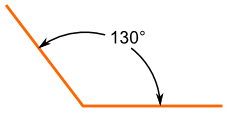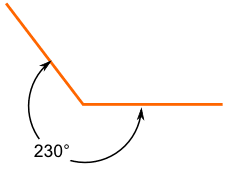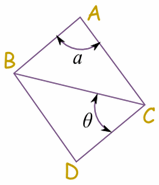Definition of angle:
angle
noun
plural noun: angles
- 1.the space (usually measured in degrees) between two intersecting lines or surfaces at or close to the point where they meet.
"in any triangle, the longest side is opposite the largest angle" - 2.a particular way of approaching or considering an issue or problem.
"discussing the problems from every conceivable angle"
synonyms: perspective, way of looking at something, point of view, viewpoint, standpoint,position, side, aspect, slant, direction, approach, outlook, light
"we need to consider the problem from a different angle"
In planar geometry, an angle is the figure formed by two rays, called the sides of the angle, sharing a common endpoint, called the vertex of the angle. Angles formed by two rays lie in a plane, but this plane does not have to be a Euclidean plane.
- Angles smaller than a right angle (less than 90°) are called acute angles ("acute" meaning "sharp").
- An angle equal to 14 turn (90° or π2 radians) is called a right angle. Two lines that form a right angle are said to be normal, orthogonal, or perpendicular.
- Angles larger than a right angle and smaller than a straight angle (between 90° and 180°) are called obtuse angles ("obtuse" meaning "blunt").
- An angle equal to 12 turn (180° or π radians) is called a straight angle.
- Angles larger than a straight angle but less than 1 turn (between 180° and 360°) are called reflex angles.
- An angle equal to 1 turn (360° or 2π radians) is called a full angle, complete angle, or a perigon.
- Angles that are not right angles or a multiple of a right angle are called oblique angles.
As the Angle Increases, the Name Changes:

Be Careful What You Measure
 |  |
This is an Obtuse Angle
|
And this is a Reflex Angle
|
But the lines are the same ... so when naming the angles make sure
that you know which angle is being asked for! | |
Positive and Negative Angles
When measuring from a line:
- a positive angle goes counterclockwise (opposite direction that clocks go)
- a negative angle goes clockwise


Example: −67°




No comments:
Post a Comment